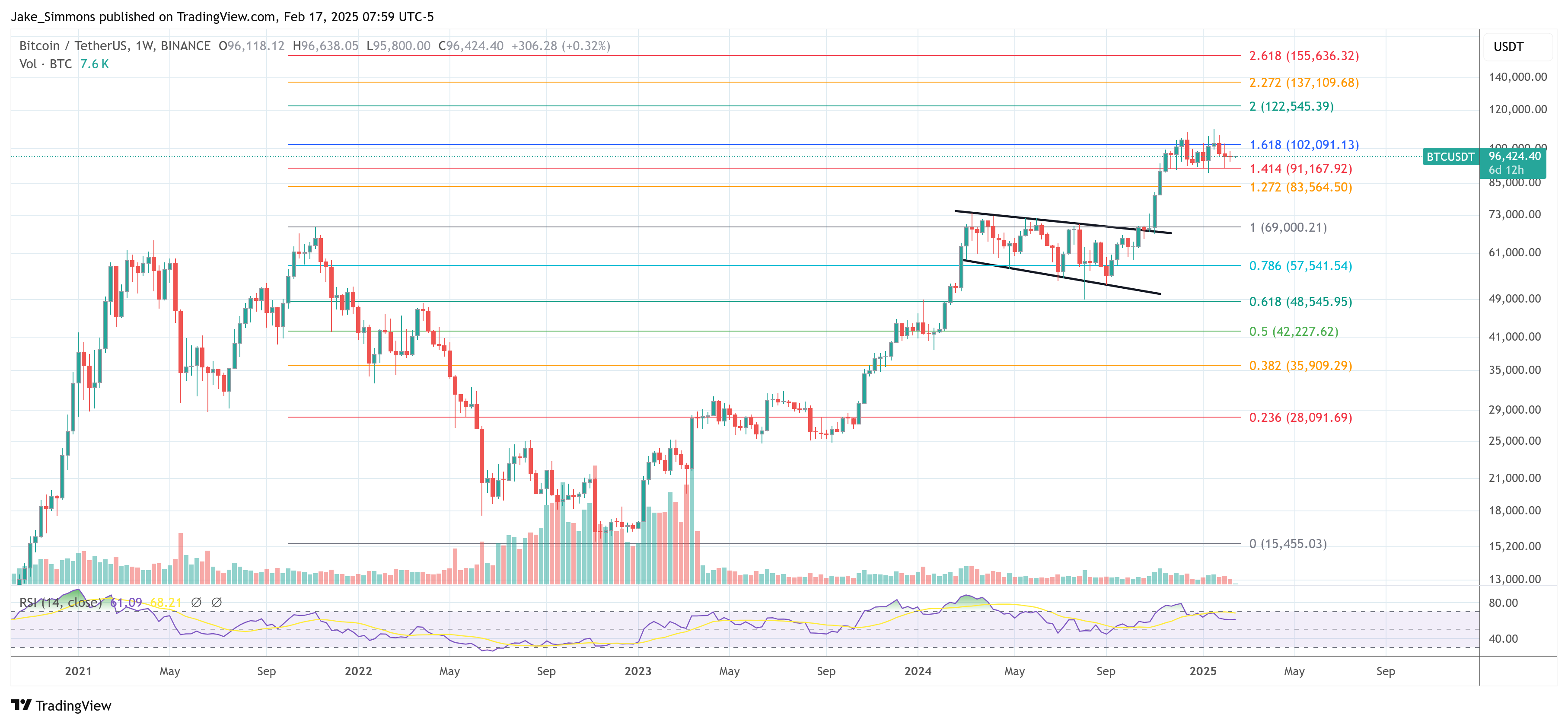A fresh infusion of liquidity from the US Treasury General Account (TGA) is making waves among market observers, with some analysts speculating this could be a key trigger for Bitcoin’s next major move. While the Federal Reserve continues its Quantitative Tightening (QT) program, the TGA’s latest cash injection—pegged at up to $842 billion—has sparked debate over whether we are witnessing a stealth version of quantitative easing, sometimes referred to as “Not QE, QE.”
Fed’s “Not QE, QE”
In a post shared on X, macro analyst Tomas (@TomasOnMarkets) offered a breakdown of how this dynamic is playing out: “‘Not QE, QE’ has officially started. A liquidity injection that could total up to $842bn from the US Treasury General Account began this week. Functionally, this is similar to Quantitative Easing, but on a temporary basis.”
The backdrop for this liquidity surge is the binding $36 trillion US debt limit. With no new debt issuance allowed until a fresh debt ceiling agreement is reached, the Treasury is forced to rely on funds from the TGA to cover government spending obligations. This draws down the TGA balance—$842 billion as of Tuesday, February 11—effectively injecting liquidity into financial markets.
According to Tomas, the Treasury’s “train” of TGA spending started in earnest on Wednesday, February 12: “From my understanding, the official ‘debt ceiling-induced’ Treasury General Account (TGA) drawdown began on Wednesday February 12… This train is now in motion and will not stop until lawmakers come to a new debt ceiling agreement.”
He projects that the first segment of this process will likely involve around $600 billion in injections between February 12 and April 11. After the April tax season, a temporary replenishment of the TGA could occur, but until a new debt ceiling deal is reached, the Treasury will presumably continue to spend down existing cash reserves.
While some observers are hailing this development as a de facto round of QE, Tomas underscores that the final net impact depends on two critical drains on liquidity: The Federal Reserve is rolling off assets at about $55 billion per month, which Tomas expects to continue at least through the next FOMC meeting in March. Over two months, that translates to an estimated $110 billion liquidity reduction.
With the Treasury issuing fewer T-bills due to debt-ceiling constraints—termed “net negative T-bill issuance”—money market funds may have fewer short-term government securities to buy. This scarcity could prompt them to park more cash in the Fed’s Reverse Repo facility, which effectively drains liquidity from the broader market.
Tomas notes: “This may incentivize money market funds to park cash in the Fed’s Reverse Repo, potentially pushing this chart up… Reverse Repo usage increasing would be a liquidity drain, as money would be moving away from markets and into the Reverse Repo facility at the Fed.”
Overall, the true scale of the TGA-based stimulus remains uncertain. Last week, net injections into the system were estimated at $50 billion, a figure that could fluctuate in the weeks ahead as QT and Reverse Repo demand evolve.
Another key piece of the puzzle is the ongoing political deadlock over the debt ceiling. Despite calls for bipartisan cooperation, divisions within the narrow Republican majority—combined with broad Democratic opposition—complicate prospects for a swift resolution.
House Republicans recently put forward a plan tying “trillions of dollars” in tax cuts to raising the debt ceiling. However, the measure’s passage is far from assured, as deeply conservative members object to any debt limit increase on principle. Past increases have typically required cross-party support, indicating a potentially prolonged standoff.
“This comes down on the shoulders of House Speaker Mike Johnson, as he attempts to rally lawmakers behind the plan,” Tomas notes, reflecting widespread skepticism about whether sufficient votes can be secured.
Will Bitcoin Benefit?
For Bitcoin traders, these liquidity ebbs and flows often correlate with broader risk appetite—Bitcoin has historically seen upward price movements during periods of loose monetary policy and liquidity injections. Although the Federal Reserve has signaled no immediate halt to QT, the TGA drawdown’s near-term flood of cash could still buoy risk assets, including Bitcoin.
Precisely how much of this “Not QE, QE” trickles into Bitcoin remains to be seen. Yet, for market participants watching daily net liquidity metrics, the interplay between TGA drawdowns, QT, and Reverse Repo usage has become a central storyline. As the standoff in Washington continues, the Bitcoin space will be monitoring every uptick and downtick in the Fed’s liquidity charts—hoping it might just flip the switch on Bitcoin’s next big breakout.
At press time, Bitcoin traded at $96,424.


















